Atopic Dermatitis
Article Sections
Introduction
Atopic dermatitis, or eczema, is a chronic, inflammatory skin condition that usually begins in early childhood. It commonly presents with acute exacerbations of dry, pruritic patches in a characteristic distribution depending on age (eg, flexural creases in older children and adults). Diagnosis is clinical, and management includes skin hydration (eg, liberal emollients) and topical corticosteroids.
Pathogenesis
The pathogenesis of eczema is multifactorial and includes a permeable skin barrier, exposure to environmental irritants, and immune dysfunction.
- Permeable skin barrier: Loss-of-function mutations in filaggrin, an epidermal protein that helps maintain the skin barrier, result in decreased barrier integrity through impaired keratin filament aggregation and decreased tight junction expression. Genetic defects in other epidermal proteins or lipids may also result in increased permeability and loss of water content.
Continue Learning with UWorld
Get the full Atopic Dermatitis article plus rich visuals, real-world cases, and in-depth insights from medical experts, all available through the UWorld Medical Library.
Figures
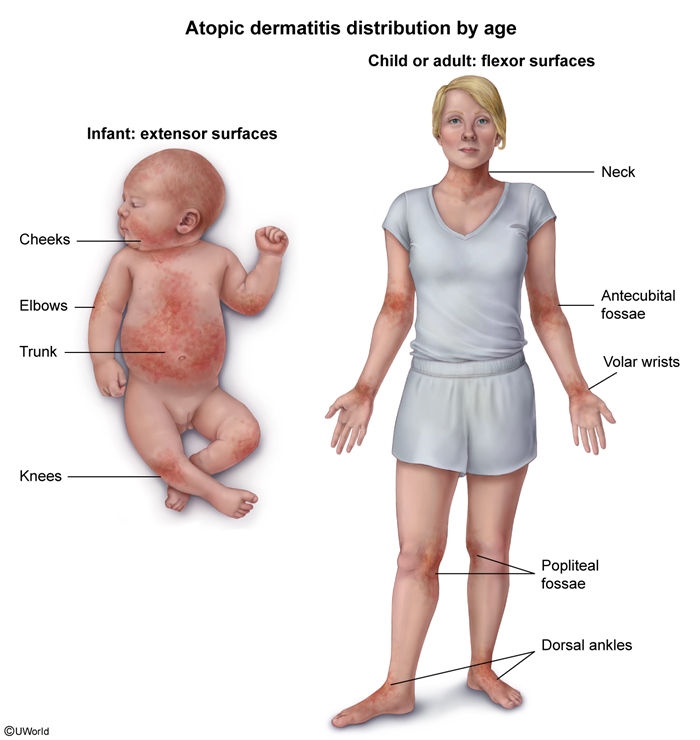
Figure 1
Images
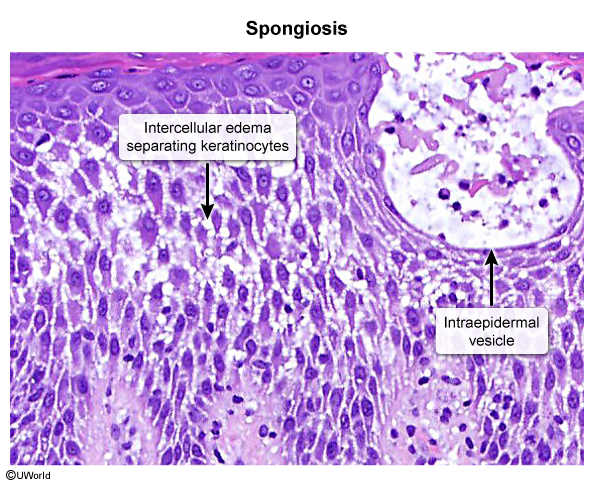
Image 1
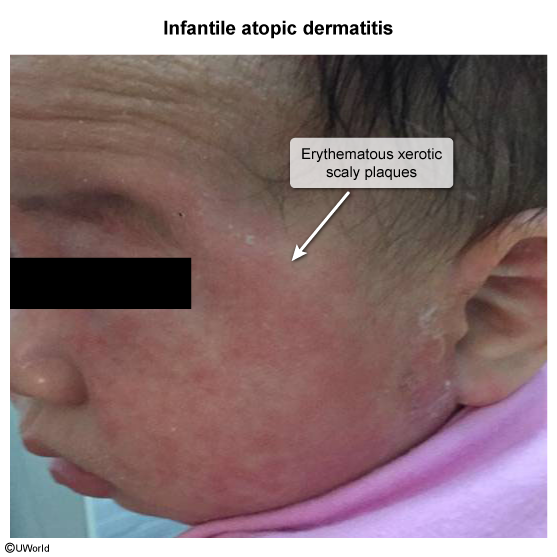
Image 2
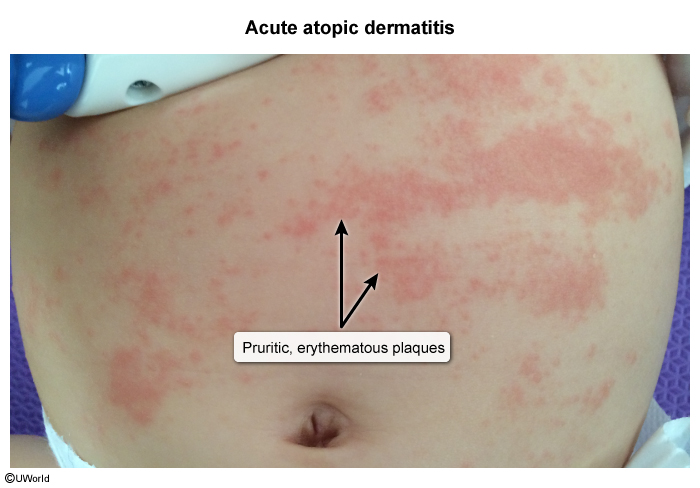
Image 3
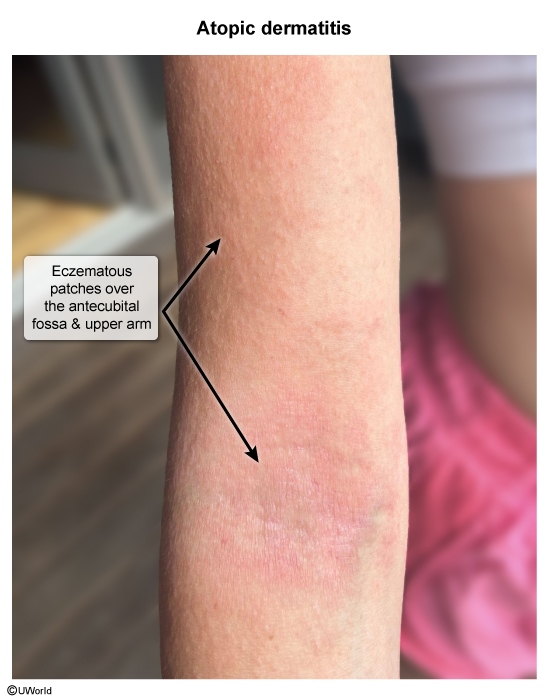
Image 4
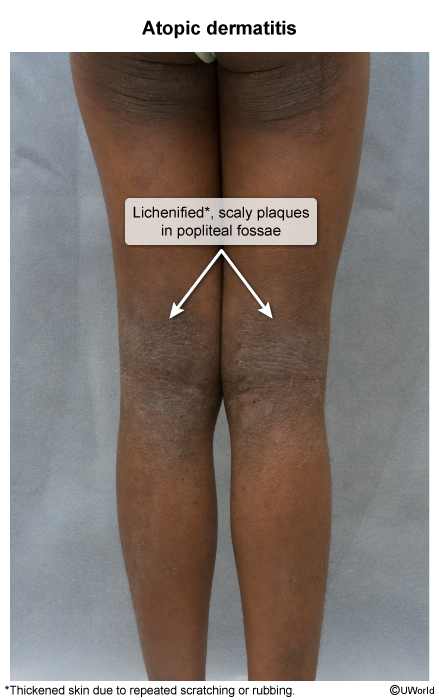
Image 5